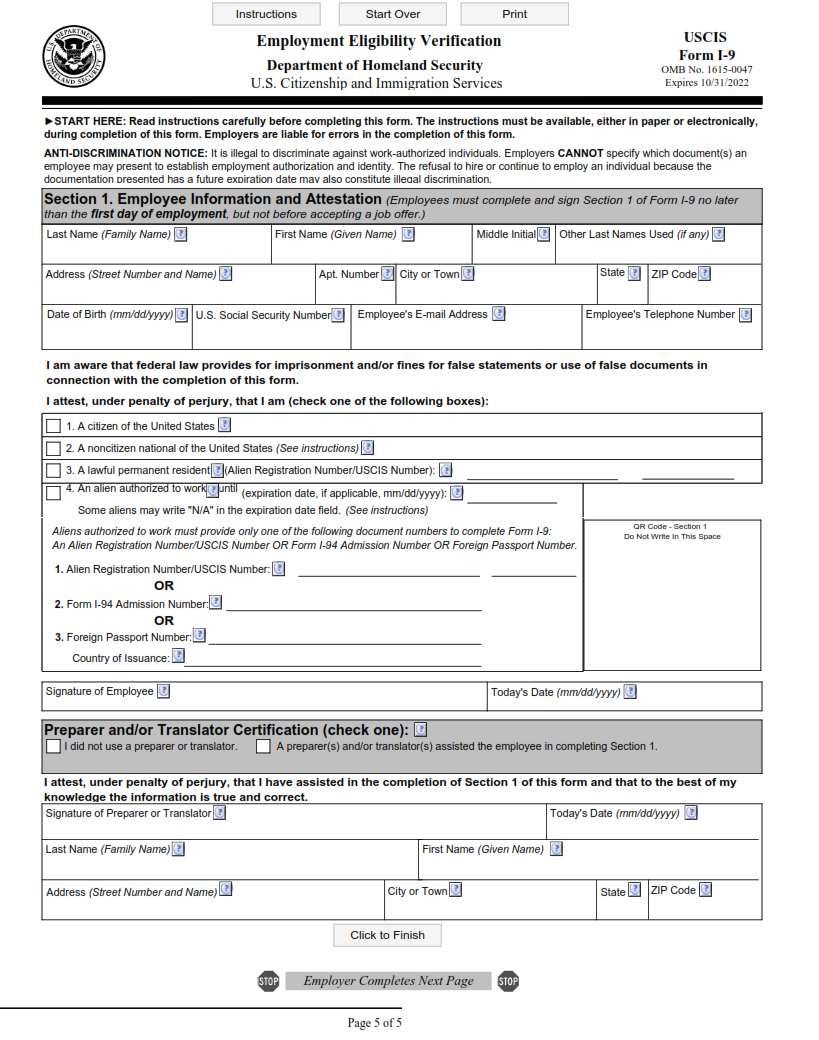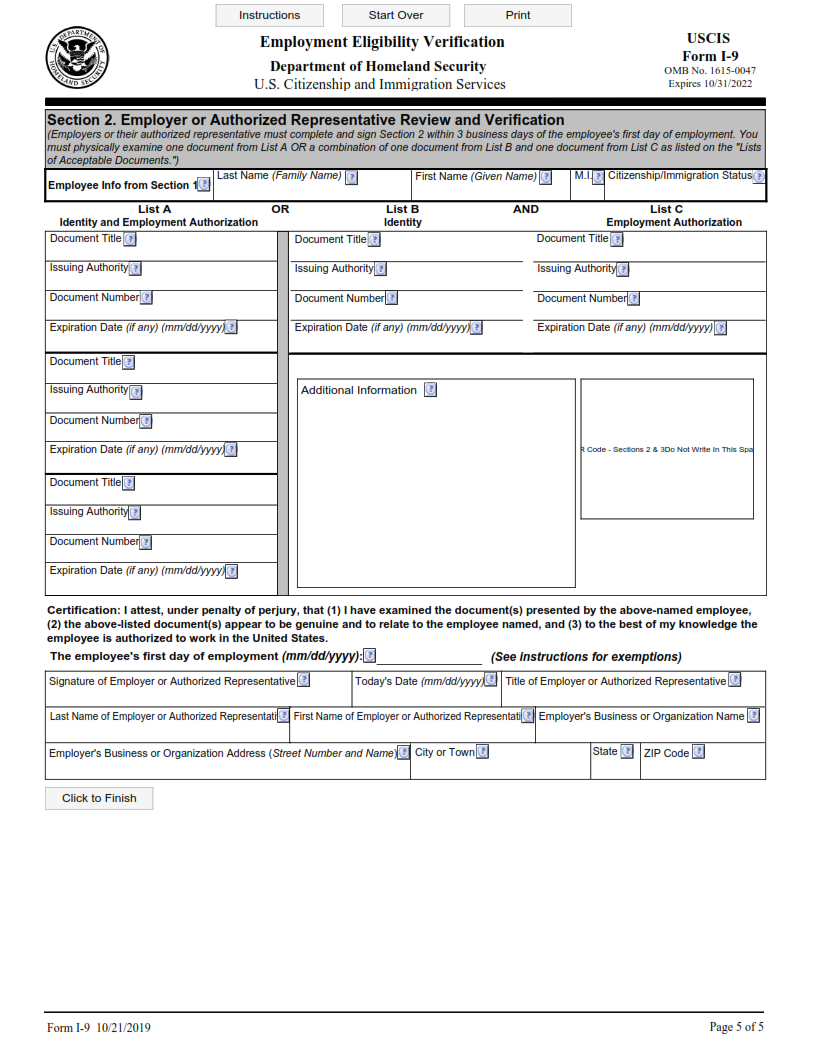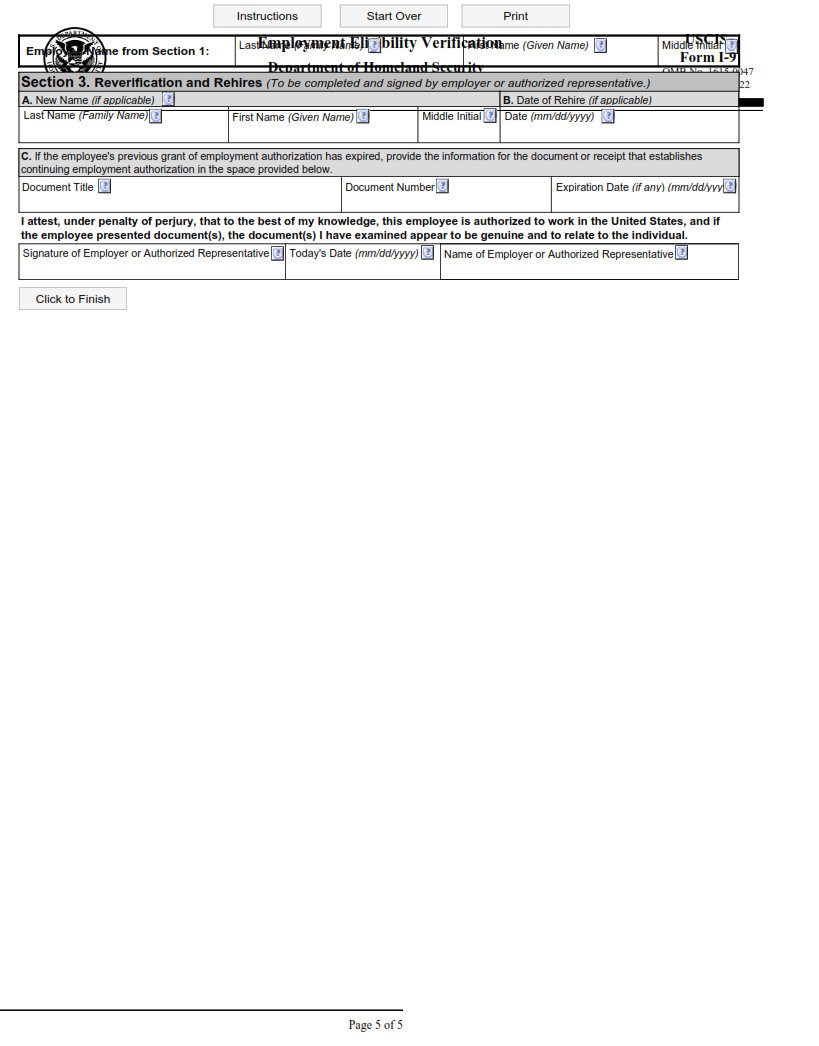FINDERDOC.COM – I-9 Form – Employment Eligibility Verification – The I-9 Form is an essential part of the hiring process for any employer. This form serves as a tool to ensure employers are verifying the eligibility of their employees to work in the United States. It is important for employers to complete this form correctly, as failure to comply with federal regulations can have serious consequences. The purpose of this article is to provide readers with an overview of the I-9 Form, what information it requires and how it should be completed. Additionally, we will discuss why employers must properly maintain records pertaining to their employees’ employment eligibility status.
Download I-9 Form – Employment Eligibility Verification
| Form Number | I-9 Form Form |
| Form Title | Employment Eligibility Verification |
| File Size | 727 KB |
| Form By | USCIS Forms |
What is an I-9 Form Form?
The I-9 form, also known as the Employment Eligibility Verification, is required for all employers and their new hires in the United States. This form aims to verify that an individual has an authorized right to work within the US. Employers are legally required to complete this document when they hire a new employee, regardless of their citizenship or national origin.
The I-9 form requires employers and employees to provide certain forms of identification that prove eligibility for employment in the United States. Employees must supply documents such as passport stamps, driver’s licenses, social security cards or birth certificates along with other documents depending on the status of their citizenship.
What is the Purpose of the I-9 Form Form?
The I-9 form is an important document that employers must use to verify the eligibility of their employees for employment in the United States. It is a part of U.S. Citizenship and Immigration Services’ (USCIS) Employment Eligibility Verification program, which helps to ensure that only authorized workers are hired by employers. The form must be completed by both the employer and employee at the time of hire, with each party providing certain documents as proof of identity and authorization to work in the U.S.
On the I-9 form, employers attest that they have examined documentation provided by employees proving their identity and work authorization status in order to comply with immigration laws enforced by USCIS. Employers must retain this form for a minimum of three years after hiring an employee or one year after termination, whichever comes later.
Where Can I Find an I-9 Form Form?
The I-9 Form, also known as the Employment Eligibility Verification Form, is an important document used to verify that a person is eligible to work in the United States. This form must be completed by both the employer and employee within three business days of starting employment, so it’s important for employers to have access to this form.
For employers looking for an I-9 Form, they can find one on the United States Citizenship and Immigration Services website. This website provides both a fillable version of the form and instructions on how to complete it correctly. Employers can also find guidance from their state labor office or contact their local Social Security Administration office if they need assistance with completing the I-9 Form correctly.
Additionally, some software companies may offer specialized products that are designed specifically for filling out I-9 Forms electronically.
I-9 Form – Employment Eligibility Verification
The I-9 Form is an essential document for employers and employees alike. It is used to verify the identity and employment eligibility of individuals hired for employment in the United States. The form’s purpose is to ensure that all those employed in the U.S., regardless of their nationality or immigration status, are legally authorized to work in the country.
Employers must complete a new I-9 Form for each newly hired employee and maintain copies of them on file, as required by law. They must also have these forms available for inspection by government officials when requested. The form consists of two main parts: Section 1 requires basic information about the employee, such as name and address; Section 2 requires proof of identity and employment eligibility from acceptable documents provided by the employee.
I-9 Form Form Example


